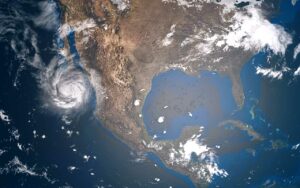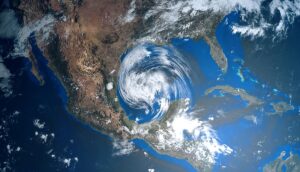In the 1930s, the Great Depression ravaged the US economy and made life difficult for nearly every working-class person in the country. Part of the reason the era was so tough on blue-collar workers and farmers was the proliferation of extreme sandstorms in the Midwest, a region that was known as the “Dustbowl” due to its semi-arid climate and dusty soil.
The region became home to countless “black blizzards,” massive sandstorms that would whip through towns, shattering windows and killing livestock and people alike. The storms were so intense that they would occasionally even carry all the way to New York City or Washington, DC.
What Caused the Black Blizzards?
The Dust Bowl era is characterized by a series of bad decisions made at the government and individual levels that eventually spilled over into a vicious cycle that eroded the topsoil of much of the Southern Great Plains. The US government passed several laws that allowed for settlers from the East Coast to grab massive parcels of land in the Midwest, with the express intent of turning the area into farmland.
However, the Great Plains aren’t exactly a great spot for farming without significant irrigation infrastructure. Farmers over-plowed the land, dug up native grasses, and severely eroded the topsoil. A drought that started in 1930 was the nail in the coffin for many farms. The dust and dirt from the now-barren fields, held down by little more than gravity, simply blew away.
A Vicious Cycle
Because of the arid land in the region presenting a challenge for farmers, fewer and fewer people tried to plant anything in the Dust Bowl region throughout the 1930s. This, in turn, worsened the effects of the sandstorms, as less plant life kept the dirt packed down, forcing more and more people to flee from the region.
The dust storms would leave massive clouds of black dirt hanging over cities and settlements, and the dirt was said to have the uncanny ability to seep into every nook and cranny of every home in the region. People would develop pneumatic illnesses from the constant dust inhalation, creating a medical emergency to coincide with the ecological disaster.
Black Sunday
The most devastating dust storm of the Dust Bowl era occurred on Sunday, April 14, 1935, a day that lives in infamy as “Black Sunday”. An estimated three million tons of topsoil are estimated to have blown off of the Great Plains on a single day, resulting in a two-mile-high column of black dust rolling across the US toward the East Cost.
The massive amount of dust resulted in a thin layer of dirt covering nearly everything in the Southeast of the country. Coughing fits and pained breaths were the rules of the day, and the number of deaths from pulmonary illness is almost impossible to estimate.
It wouldn’t be until 1939 that the drought in the Great Plains region finally abated. While the economic impacts of the Depression still lingered for years after, the Dust Bowl came to a close as normal rainfall helped pack the soil back down and end the scourge of the black blizzards.









